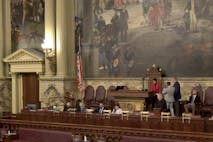
An unwanted abortion at age 18 sent Remy into a deep depression until she found healing
Sheena Rodriguez
·
Opinion
Angeline Tan
·
Politics
Tabitha Goodling
·
Human Interest
Bridget Sielicki
·
Human Interest
Angeline Tan
·
International
Cassy Cooke
·
400k+ Readers Strong & Growing
News & Commentary from
A Pro-Life Perspective
As the news arm of Live Action, we educate the public and advocate for preborn rights by providing timely, accurate, and compelling news and stories about the pro-life movement.

Opinion
Angeline Tan
·
Politics
Tabitha Goodling
·
Human Interest
Bridget Sielicki
·
Human Interest
Sheena Rodriguez
·
Human Interest
Angeline Tan
·
International
Cassy Cooke
·
International
Angeline Tan
·
Human Interest
Andrea Trudden
·
Human Interest
Lisa Bast
·
Human Interest
Nancy Flanders
·
Politics
Nancy Flanders
·
Politics
Bridget Sielicki
·